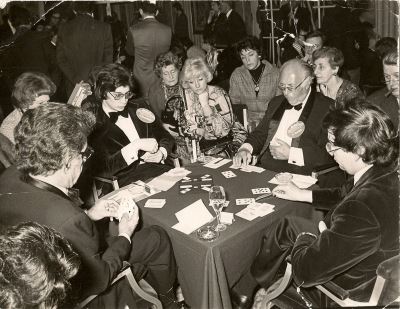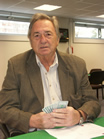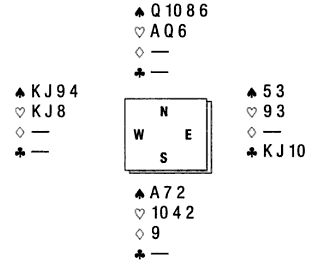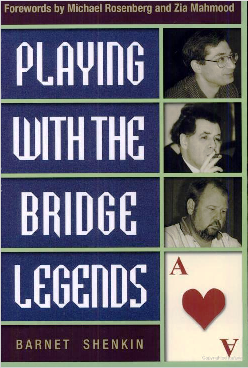Source: Playing with the Bridge Legends By Barnet Shenkin

When I first started to go to international tournaments in the early seventies, I learned two things about the bridge players from Poland.
Firstly, as well as being fine players, they played very complicated systems and I did not enjoy playing against them. Secondly, they were always short of money and brought jars of caviar to sell at the tournaments. The caviar was of the best quality and the money it brought in helped with their expenses, so all in all everybody was happy.
This went on for many years but recently, caviar aficionados have been hard put to find any at bridge tournaments; obviously times are better now in Poland.
This increase in affluence has been matched by the growth in stature of Polish bridge players, several of whom now enjoy the reputation of being among the very best in the world. As World Olympiad Champion in 1984 and winner of the European title in Menton in 1993, Poland is always a contender for the Bermuda Bowl.

As a European, I know the team that most people prefer not to play is Poland. They are excellent card players who like to defend, especially doubled contracts. All their pairs play complex systems, which often involve a number of unusual two-bids, including some where the suits are unspecified. One of Poland’s best-known players is Piotr Gawrys. Winner of the 1984 World Olympiad Teams in Seattle, Gawrys is one of the world’s top players and travels the globe playing bridge.
He showed me this little gem of a hand from a European Championship match against France.

He held: ![]() KJ94
KJ94 ![]() KJ875
KJ875 ![]() 7
7 ![]() Q82
Q82
After an opening bid of 1![]() on his right he overcalled 1
on his right he overcalled 1![]() and the French bid to a contract of 6
and the French bid to a contract of 6![]() , declared by Jean Louis Stoppa. With no appealing lead, Piotr selected the
, declared by Jean Louis Stoppa. With no appealing lead, Piotr selected the ![]() Q and this is what happened.
Q and this is what happened.

Declarer won the ![]() A and ruffed two clubs in dummy while drawing three rounds of trumps to arrive at the position in the lower diagram.
A and ruffed two clubs in dummy while drawing three rounds of trumps to arrive at the position in the lower diagram.

What should happen now is that declarer leads a low spade to the queen and a low spade back to the ace. Gawrys now intended to drop the ![]() K under the ace, pretending to be a man holding on to the
K under the ace, pretending to be a man holding on to the ![]() J and unblocking his spade from
J and unblocking his spade from ![]() Kxx. Declarer would not be able to afford to cash the last trump while the defense still had club winners, and so would attempt to exit to East’s supposed
Kxx. Declarer would not be able to afford to cash the last trump while the defense still had club winners, and so would attempt to exit to East’s supposed ![]() J. Gawrys could pounce on this with the
J. Gawrys could pounce on this with the ![]() J to lead a fourth spade, endplaying dummy in hearts for down one.
J to lead a fourth spade, endplaying dummy in hearts for down one.
This would be a flawless brilliancy. In real life, though, declarer played a spade to the ten which held, and a second spade to his ace, on which Gawrys dropped the ![]() J. Now when declarer tried a third spade, Piotr was able to win his
J. Now when declarer tried a third spade, Piotr was able to win his ![]() K and play a fourth spade, endplaying the dummy to lead hearts away.
K and play a fourth spade, endplaying the dummy to lead hearts away.
Declarer erred though — after he had won the second spade trick, it was safe to play his last trump which would have squeezed West out of either his presumed ![]() J (making it safe to exit in spades) or in actuality, his fourth spade. Then he could exit in spades or take the heart finesse to bring the contract home.
J (making it safe to exit in spades) or in actuality, his fourth spade. Then he could exit in spades or take the heart finesse to bring the contract home.
